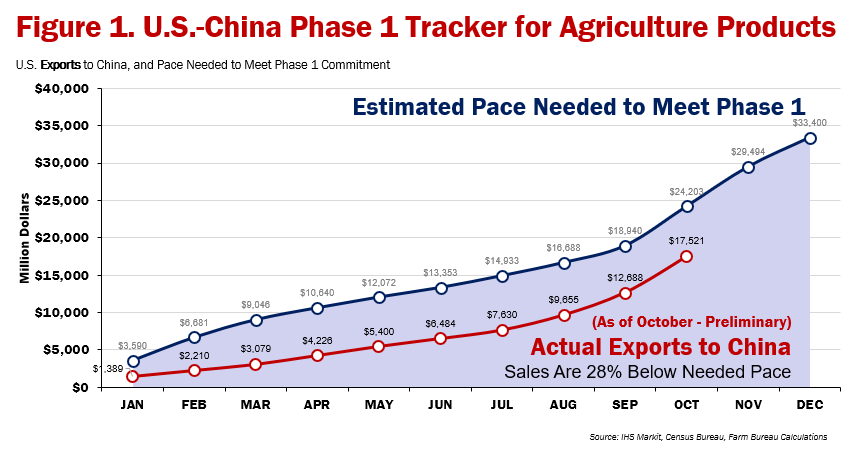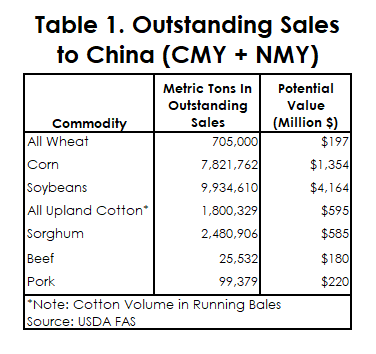Updated Outlook on U.S. Exports to China
TOPICS
Trade WarMichael Nepveux
Economist

photo credit: Getty Images
Michael Nepveux
Economist
In late October USDA and USTR jointly issued a report highlighting the progress made to date in implementing the agricultural provisions in the U.S.-China Phase 1 Economic and Trade Agreement. Specifically, the report indicated that at least 50 of the 57 technical commitments under the Phase 1 agreement had been implemented and that China had substantially accelerated its purchases of U.S. agricultural products. Today’s article reviews U.S. census agricultural trade data and Foreign Agricultural Service export sales data to evaluate accumulated and outstand export sales to China during the 2020 calendar year.
Tracking Phase I
All eyes have been on China since the implementation of the Phase 1 deal in February 2020. As a reminder, the Phase 1 deal commits China to importing around $36.5 billion in agricultural goods in calendar year 2020. For the month of October, agricultural products shipped to China totaled over $17.5 billion. This represents exceptionally strong exports by historical standards, however, China is still not on pace to meet the lofty goals included in the Phase I agreement.

Current Outstanding Sales
Some industry insiders are worried the rising tensions between the two countries will hurt outstanding sales, which have been made but not shipped, meaning they could be cancelled. It is not at all uncommon for China to cancel sales for a variety of reasons. USDA’s Foreign Agricultural Service tracks this information through the export sales reporting program. The program requires U.S. exporters to report sales of certain commodities to FAS each week. In addition to the weekly requirement, daily reporting is required when a single exporter sells a very large quantity, i.e., an exporter sells more than 100,000 metric tons of wheat or corn in one sale. As of November 26, the U.S. had a variety of commodities with large volumes of outstanding sales (Table 1). U.S. exporters had nearly 10 MMT in soybeans, nearly 8 MMT in corn, nearly 2.5 MMT in sorghum, and nearly 2 million bales of cotton in outstanding sales to China.

The export sales reporting system only reports the volume of commodities. However, using FAS’ Global Agricultural Trade System, one can use reported value and volume of exports to calculate an implied export value of those products. Table 1 uses October 2020 values and volumes for each commodity to China to calculate a recent “implied export value” and from there comes to a rough estimate of the potential value of these outstanding sales. Using these assumptions, the U.S. has over $4.1 billion in outstanding sales of soybeans to China that could be under threat of a response from the Chinese government. This is in addition to $1.4 billion in outstanding sales of corn, $595 million in cotton, $585 million in sorghum, $197 million in wheat, $180 million in beef, and $220 million in pork.
Trending Topics
VIEW ALL